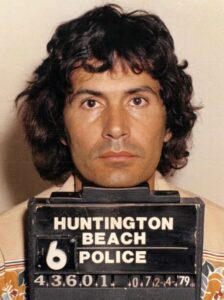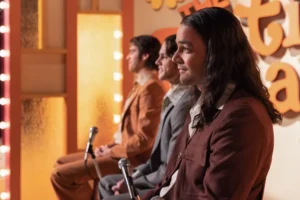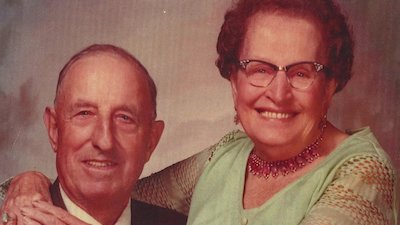Rodney Alcala: The Dating Game Killer and the Story Behind ‘Woman of the Hour’

Rodney Alcala, widely known as “The Dating Game Killer,” is one of the most chilling figures in American criminal history. His seemingly ordinary facade masked a dark reality that shocked the nation. Alcala’s heinous crimes spanned across the 1970s, and his unsettling ability to charm those around him only added to the horror of his actions. Remarkably, in the midst of his killing spree, he appeared on the popular television show The Dating Game, earning his notorious nickname.
Fast forward to 2024, Anna Kendrick’s directorial debut, Woman of the Hour, revisits this harrowing story from the perspective of the victims, offering a poignant and sobering reflection on the era’s societal challenges. This film sheds light on the systemic failures that allowed predators like Alcala to thrive, making it a crucial watch for those seeking to understand the complexities of such cases. In this blog post, we at National Crime Scene Cleanup will delve into the real-life story of Rodney Alcala and explore how Woman of the Hour brings a fresh, empathetic perspective to these tragic events.
The Real Story of Rodney Alcala
Early Life and Background
Rodney Alcala was born on August 23, 1943, in San Antonio, Texas. His family moved to Mexico when he was a child, but after his father abandoned the family, they returned to the United States. Alcala demonstrated signs of intellectual brilliance from a young age, which later earned him a scholarship to UCLA, where he graduated with a fine arts degree. He even studied under renowned film director Roman Polanski at New York University. Despite his academic achievements, Alcala’s early life was marred by troubling behavior, including a documented episode where he went AWOL from the Army in 1964, which led to a diagnosis of antisocial personality disorder.
The Crimes
Alcala’s killing spree began in the late 1960s, with his first known assault occurring in 1968, when he lured an eight-year-old girl into his Hollywood apartment. She was found alive, but Alcala fled, evading arrest and prompting a nationwide manhunt. Throughout the 1970s, Alcala’s charm and good looks allowed him to manipulate and trap young women. He would often pose as a photographer, offering to take their pictures before assaulting and murdering them.
One of the most shocking aspects of Alcala’s crimes was the sheer brutality and premeditation involved. His victims were often tortured before their deaths, with many of them being found with severe head trauma or strangulation marks. Alcala was a meticulous predator, taking trophies from his victims in the form of photographs or personal items, which would later serve as crucial evidence in his trials.
The Dating Game Appearance
In a bizarre twist, Rodney Alcala appeared on the television show The Dating Game in 1978, during the height of his killing spree. His unsettling charm won over the audience and the contestant, Cheryl Bradshaw, who ultimately chose him as her date. However, Bradshaw later refused to go on the date, citing that she found him “creepy.” This appearance on a national television show added to the macabre fascination with Alcala, as he was actively committing murders around the time of the broadcast.
Capture and Conviction
Alcala was finally captured in 1979 when a routine traffic stop led police to link him to a series of murders. His arrest and subsequent trial uncovered a horrifying trail of victims, many of whom were young women and girls. Over the years, Alcala was convicted of several murders, with the number of his victims believed to be much higher. In 2010, he was sentenced to death for the murders of four women and a 12-year-old girl in California. His case remained in the public eye for decades, both for the gruesome nature of his crimes and the chilling circumstances of his capture.
Rodney Alcala’s story serves as a grim reminder of the dangers that can lurk behind a charming facade, highlighting the importance of vigilance and the tireless work of law enforcement to bring such criminals to justice.
Woman of the Hour: A Film Inspired by the True Story
Overview of the Movie
Woman of the Hour, directed by Anna Kendrick, is a compelling dramatization of Rodney Alcala’s notorious crimes, particularly focusing on his appearance on The Dating Game. The film offers a unique lens, shifting the narrative focus to the victims and those who narrowly escaped his grasp. This perspective allows for a deeper exploration of the emotional and psychological toll on the survivors, providing a stark contrast to the sensationalized media coverage of Alcala himself.
Set in the late 1970s, the movie captures the cultural backdrop of the era, highlighting the pervasive misogyny and systemic failures that allowed Alcala to continue his crimes for so long. Kendrick’s direction ensures that the film maintains a respectful tone, emphasizing the human stories behind the headlines.
Portrayal of Rodney Alcala
In Woman of the Hour, Rodney Alcala is depicted as the manipulative and charismatic figure he was, but the film does not glorify him. Instead, it presents a chilling and realistic portrayal, showing how his charm masked a dangerous predator. The narrative carefully balances the portrayal of Alcala, providing insight into his psychological manipulation without making him the central figure. The focus remains on the experiences of the victims and the impact on their lives.
Victim Advocacy
One of the most notable aspects of Woman of the Hour is its emphasis on victim advocacy. The film aims to give a voice to those who were affected by Alcala’s crimes, making their stories the heart of the narrative. By doing so, it sheds light on the systemic issues that allowed such a predator to operate undetected for years.
Kendrick’s film is a powerful commentary on the importance of listening to and amplifying victims’ voices. It critiques the media’s tendency to sensationalize criminals, instead offering a platform for those who suffered due to Alcala’s actions. This approach not only honors the victims but also educates the audience on the broader societal changes needed to prevent similar tragedies.
Woman of the Hour has been praised for its sensitive and thought-provoking portrayal of such a dark chapter in history. By focusing on the victims’ perspectives, the film provides a fresh and necessary narrative on the events surrounding Rodney Alcala’s crimes, making it an important contribution to the true crime genre.
Conclusion
The story of Rodney Alcala, “The Dating Game Killer,” is one of the most chilling examples of how predators can hide in plain sight, using charm and deception to mask their true intentions. His crimes left a lasting scar on the victims’ families and raised critical awareness about the importance of vigilance and systemic reforms in criminal justice.
Anna Kendrick’s Woman of the Hour brings a fresh perspective to this dark chapter, focusing on the victims’ experiences and the broader societal issues that allowed Alcala to evade capture for so long. By highlighting the victims’ stories, the film not only honors their memories but also prompts important conversations about victim advocacy and media responsibility.
As we continue to reflect on cases like Alcala’s, it is crucial to remember the lessons learned and strive to create a society where such tragedies are less likely to occur. Watching Woman of the Hour offers viewers a chance to engage with these narratives thoughtfully and empathetically, fostering a deeper understanding of the impact of such crimes on individuals and communities alike.






